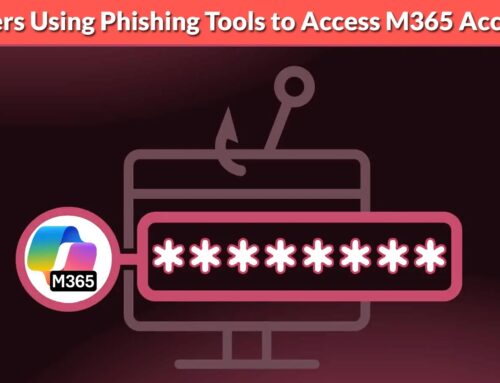
Aembit Extends Secretless CI/CD with Credential Lifecycle Management for GitLab
In the intricate landscape of modern software development, the acceleration provided by Continuous Integration/Continuous Delivery (CI/CD) pipelines is undeniable. Yet, this very efficiency often introduces a critical vulnerability: the proliferation of long-lived credentials. Personal Access Tokens (PATs) and other secrets, essential for automating these pipelines, frequently become attack vectors when left exposed or unmanaged. This inherent tension between security and agility is precisely where Aembit’s latest innovations for GitLab step in, offering a robust solution to mitigate these pervasive risks.
The Peril of Persistent Credentials in CI/CD
CI/CD automates vital development processes, from code compilation to deployment. This automation, however, relies heavily on programmatic access via credentials like PATs, API keys, and secret environment variables. Traditionally, these secrets have a long lifespan, making them prime targets for malicious actors. A compromised PAT, for instance, can grant an attacker broad access to source code repositories, build systems, and even production environments, leading to devastating data breaches or supply chain attacks.
The issue is compounded by the sheer number of credentials often scattered across various stages of a pipeline, managed manually or through insecure methods. This creates a vast attack surface, making it difficult to track, rotate, and revoke access effectively. The risk isn’t theoretical; misconfigurations and exposed secrets are frequently cited as primary causes in major security incidents.
Aembit’s Credential Lifecycle Management for GitLab
Aembit, a leader in workload identity and access management (IAM), directly addresses these challenges by extending its “secretless” CI/CD approach with new Credential Lifecycle Management capabilities specifically for GitLab environments. The core idea is to drastically reduce or eliminate the need for long-lived, static secrets by providing on-demand, just-in-time access for workloads. This paradigm shift secures the automation process without impeding developer velocity.
This new offering focuses on automating the entire lifecycle of credentials, from issuance to revocation, ensuring that access is granted only when and where it’s absolutely necessary. By integrating seamlessly with GitLab, Aembit allows organizations to:
- Minimize Secret Sprawl: Reduce the number of hardcoded or long-lived secrets within CI/CD pipelines.
- Implement Just-in-Time Access: Provide ephemeral credentials that are valid only for the duration of a specific pipeline run or task.
- Automate Rotation: Ensure credentials are automatically rotated, reducing the window of opportunity for compromise.
- Enhance Auditing and Compliance: Improve visibility into credential usage and access patterns, aiding in compliance efforts.
The “Secretless” CI/CD Paradigm
The concept of “secretless” CI/CD revolves around shifting from static, pre-configured secrets to dynamic, identity-based access. Instead of a pipeline being configured with a persistent PAT, it requests temporary, short-lived credentials from an identity provider (like Aembit) when it needs to perform a specific action. This temporary credential is then validated and used for the action, expiring shortly thereafter. This significantly reduces the risk associated with secrets being inadvertently committed to version control, stored insecurely, or lingering unnecessarily.
This approach aligns with the principle of least privilege, ensuring that workloads only have the necessary permissions for the shortest possible time. For organizations leveraging GitLab, this means a more secure and streamlined development workflow, without sacrificing the benefits of automation.
Remediation Actions and Best Practices
Adopting Aembit’s solution is a significant step, but organizations should also implement broader best practices for secrets management in CI/CD:
- Regular Credential Audits: Periodically review all active credentials, their purpose, and their lifespan. Remove unused or expired credentials promptly.
- Implement Secret Scanning: Utilize tools that scan code repositories for inadvertently committed secrets. This should be part of pre-commit hooks and ongoing repository scans.
- Leverage Environment Variables Securely: While better than hardcoding, ensure environment variables holding secrets are managed securely and not exposed in logs or build outputs.
- Integrate with Secret Management Tools: For secrets that cannot be fully ephemeral, integrate with dedicated secret managers (e.g., HashiCorp Vault, AWS Secrets Manager) and ensure stringent access controls are in place.
- Principle of Least Privilege: Grant credentials only the minimum necessary permissions required for their intended task. Avoid granting broad administrative access.
- Multi-Factor Authentication (MFA): Where applicable, enforce MFA for access to CI/CD platforms and secret management systems.
- Educate Developers: Foster a security-aware culture among development teams regarding the dangers of exposed secrets and best practices for credential handling.
While specific CVEs related to exposed PATs are often a symptom of misconfiguration rather than a software vulnerability, the broader context of insecure secrets management contributes to numerous attack vectors. For example, issues stemming from inadequate access control or exposure often factor into the exploit chain of vulnerabilities like those sometimes associated with CI/CD pipeline misuse. Organizations should continuously monitor publications from the CVE database for relevant insights.
Conclusion
The extension of Aembit’s secretless CI/CD capabilities with Credential Lifecycle Management for GitLab is a significant advancement in securing modern software development pipelines. By addressing the critical challenge of long-lived and unmanaged credentials, Aembit empowers organizations to reduce their attack surface, enhance compliance, and ultimately build more secure software. This move represents a vital step towards a future where agility in development does not come at the cost of robust security.





